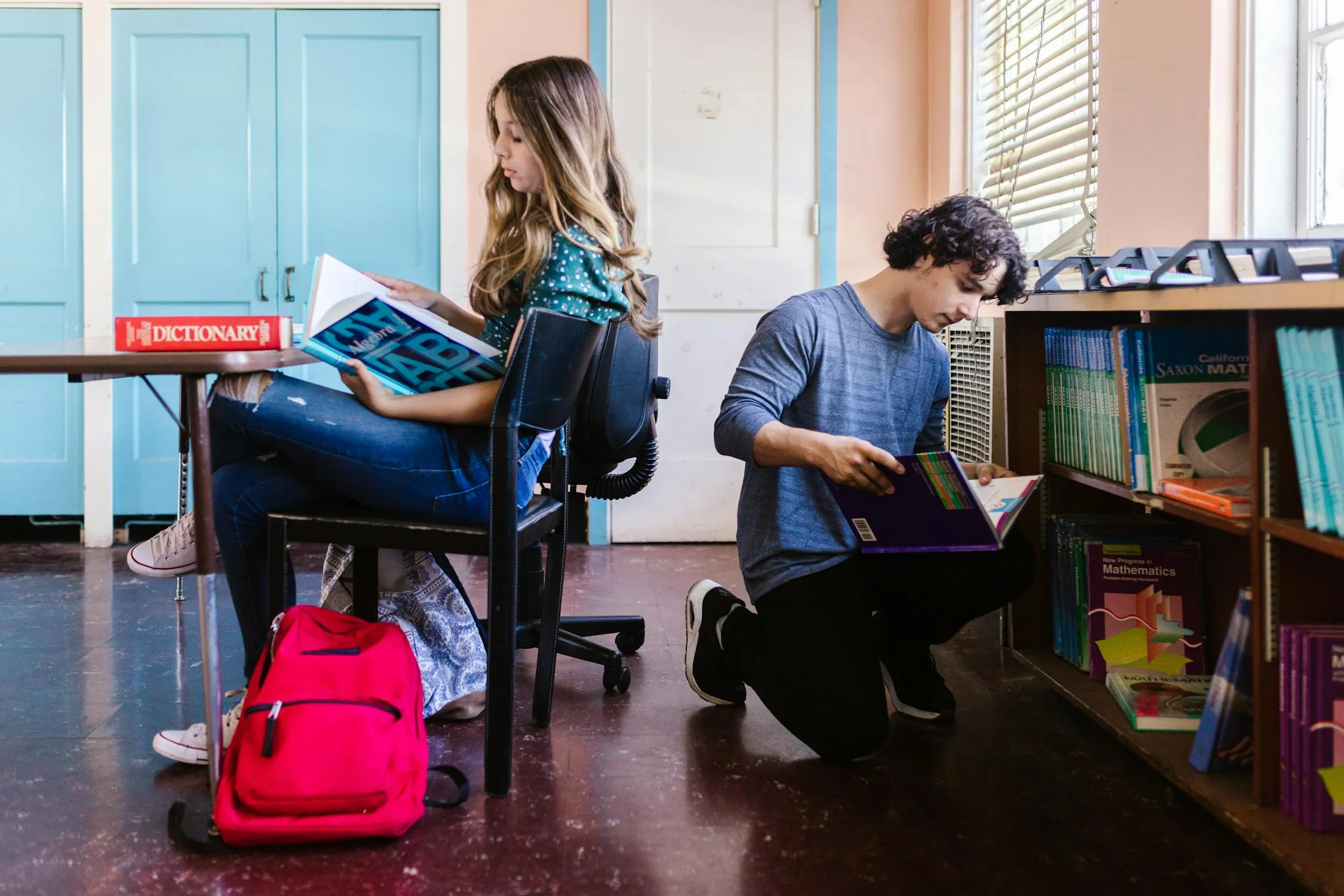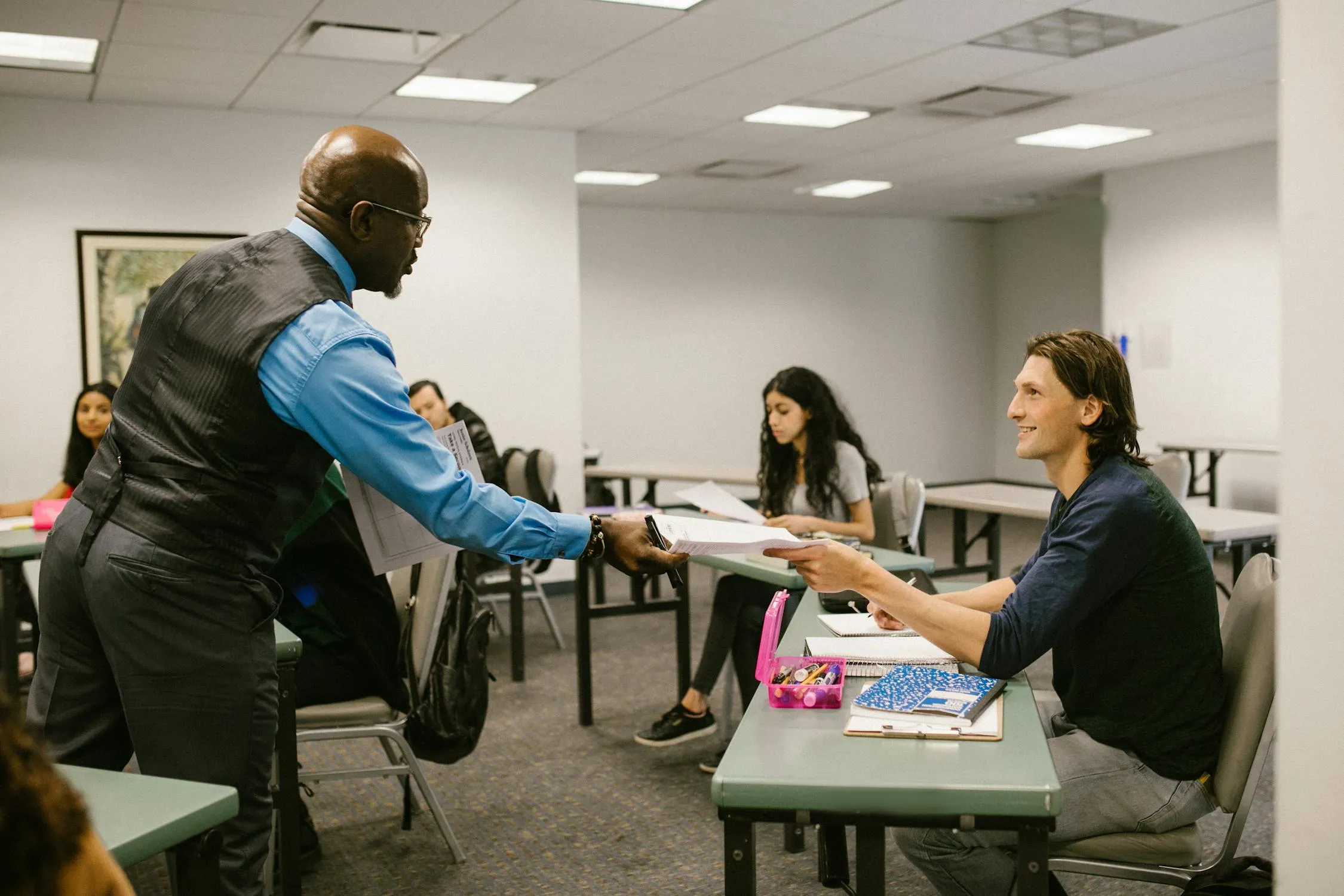20 Ways to Support Struggling Students
Powerful ways to support students struggling with their studies.
- Sophia Zapanta
- 4 min read

Studying can be a bit of a struggle for students, especially when they’re juggling multiple tasks at the same time. Working students and those who deal with family responsibilities face the added struggle of balancing work and family commitments. Thankfully, there are 20 powerful ways to lend a helping hand and ease their burden.
1. Create a Safe Learning Space
 Mikhail Nilov on Pexels
Mikhail Nilov on Pexels
Students who have a peaceful place to study feel more motivated to finish. Making a cozy space free from distractions doesn’t have to be fancy—just enough space and lighting will do the work.
2. Get to Know Them Better
 Yan Krukau on Pexels
Yan Krukau on Pexels
Understanding the student’s individual needs and interests is important. When students feel seen and understood, they are most likely to love learning.
3. Create a Study Schedule
 Anete Lusina on Pexels
Anete Lusina on Pexels
Create a study schedule to keep things clean and organized. Students who follow a schedule are likelier to feel calm and avoid stressing out.
4. Use Visual Aids
 Monstera Production on Pexels
Monstera Production on Pexels
It has been proven that students learn better when texts are incorporated with visuals. Using images, videos, and drawings to explain complicated ideas makes learning fun and memorable.
5. Promote Emotional Support
 Liza Summer on Pexels
Liza Summer on Pexels
Learning is not just about understanding complex lessons; it’s about being emotionally well, too. A simple “How are you?” can make them feel seen and valued.
6. Make Them Feel Heard
 RDNE Stock project on Pexels
RDNE Stock project on Pexels
Listening to their thoughts, opinions, and sentiments can boost their confidence and make them feel respected. Sometimes, they need someone to lean on when things get out of their control.
7. Offer One-on-one Sessions
 Antoni Shkraba on Pexels
Antoni Shkraba on Pexels
Spending extra minutes with them after school hours can make them feel you’re there to help. Sometimes, just sitting together and explaining things in a way that makes sense helps.
8. Provide Real-Life Examples
 RDNE Stock project on Pexels
RDNE Stock project on Pexels
Connect their lessons to real-world scenarios. In math, use examples like buying and cooking. If it’s history, you can share how everyday objects work, like how trees grow and how a television works.
9. Set Clear Instructions
 RDNE Stock project on Pexels
RDNE Stock project on Pexels
List down instructions and say them slowly so they learn each step. If they still find it confusing, say it differently in ways they can understand.
10. Use Technology
 Max Fischer on Pexels
Max Fischer on Pexels
Introduce them to educational apps and websites readily available online. Find one that matches what they’re struggling with and teach it to them creatively.
11. Set Goals
 RDNE Stock project on Pexels
RDNE Stock project on Pexels
Setting goals fuels a student to reach another goal while also keeping them inspired and motivated. Learning should feel rewarding, not like a chore.
12. Break Down Tasks
 RDNE Stock project on Pexels
RDNE Stock project on Pexels
Students gain confidence when they tackle one task at a time. To make things less overwhelming, help them break each task into smaller and easier chunks.
13. Give Them Time
 JESHOOTS.com on Pexels
JESHOOTS.com on Pexels
Putting pressure on students slows down their progress. It would be very helpful to give them ample time to process things at their own pace.
14. Provide Words of Encouragement
 Brett Sayles on Pexels
Brett Sayles on Pexels
Most of the time, encouragement like “You did great today!” can make even their worst moments feel better. Make them feel seen, heard, and valued by acknowledging their outcomes and, most importantly, their efforts.
15. Teach Time Management
 Monstera Production on Pexels
Monstera Production on Pexels
Let students manage their time by encouraging them to do tasks according to priority. This way, they can utilize their time wisely and avoid procrastination.
16. Use a Reward System
 RDNE Stock project on Pexels
RDNE Stock project on Pexels
A reward system where students can earn points or prizes for completing goals would make learning feel like an accomplishment. This can be as simple as earning a break, a bonus point, or a particular activity.
17. Promote Group Work
 Mikael Blomkvist on Pexels
Mikael Blomkvist on Pexels
Working in groups allows students to build teamwork and communication skills. It also gives them the chance to learn from each other and see things in a different light.
18. Use Interactive Learning Tools
 Yan Krukau on Pexels
Yan Krukau on Pexels
Long texts can feel highly draining, so make lessons more engaging by using interactive tools like integrated apps, websites, or games.
19. Mix-Up Study Methods
 Pavel Danilyuk on Pexels
Pavel Danilyuk on Pexels
Students stay engaged when they find the best approach for their learning style. Introduce other study methods that can help them retain information better and faster.
20. Involve Parents
 Pavel Danilyuk on Pexels
Pavel Danilyuk on Pexels
Students gain more confidence and motivation when they know their parents are invested in their success. Keeping their parents involved creates a positive and supportive learning environment where even their small wins are celebrated.